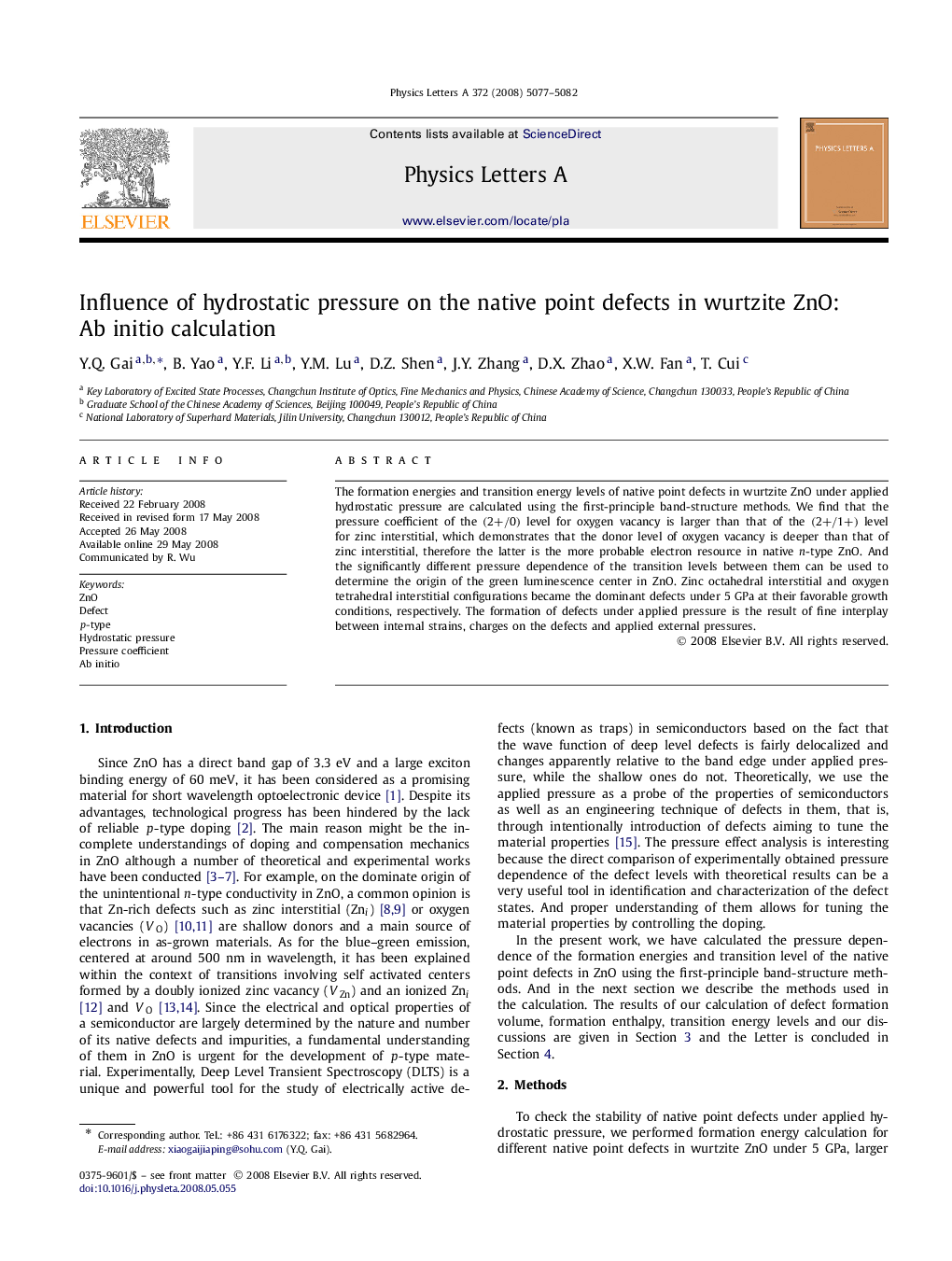| Article ID | Journal | Published Year | Pages | File Type |
|---|---|---|---|---|
| 1861336 | Physics Letters A | 2008 | 6 Pages |
The formation energies and transition energy levels of native point defects in wurtzite ZnO under applied hydrostatic pressure are calculated using the first-principle band-structure methods. We find that the pressure coefficient of the (2+/0)(2+/0) level for oxygen vacancy is larger than that of the (2+/1+)(2+/1+) level for zinc interstitial, which demonstrates that the donor level of oxygen vacancy is deeper than that of zinc interstitial, therefore the latter is the more probable electron resource in native n-type ZnO. And the significantly different pressure dependence of the transition levels between them can be used to determine the origin of the green luminescence center in ZnO. Zinc octahedral interstitial and oxygen tetrahedral interstitial configurations became the dominant defects under 5 GPa at their favorable growth conditions, respectively. The formation of defects under applied pressure is the result of fine interplay between internal strains, charges on the defects and applied external pressures.
